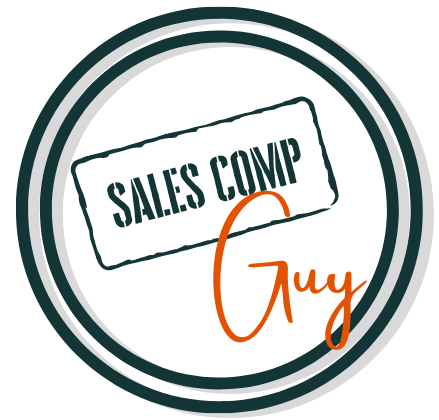Compensating the Specialist Sales Role
Exploring the intricacies of sales compensation for specialists

In my first and second posts on role-specific compensation, I discussed the changing landscape of the two most recognizable sales roles—inside sales and field sales. But as you likely know from experience, sales organizations are complex, and it often takes more than a phone call and a handshake to close a deal. In this post, I'll talk about sales specialists and some things to consider when planning for their compensation.
What are Specialist Sales Roles?
Specialist sales roles encompass a diverse array of positions, each tailored to address specific market segments, industry verticals, or product categories. Here are a few examples of specialist sales roles commonly found across various industries:
1. Technology Solutions Specialist: These professionals focus on selling complex technological solutions, such as enterprise software, cloud services, cybersecurity solutions, or IT infrastructure. They possess in-depth knowledge of the latest technological trends, understand the unique challenges faced by their clients, and recommend tailored solutions to meet their needs.
2. Medical Device Sales Representative: Medical device sales representatives specialize in selling medical equipment, devices, and supplies to healthcare providers, hospitals, clinics, and other medical facilities. They are well-versed in the features and functionalities of medical devices, understand regulatory requirements, and work closely with healthcare professionals to recommend the most suitable products for their patients' needs.
3. Financial Services Advisor: Financial services advisors specialize in offering financial products and services, such as investment portfolios, insurance policies, retirement plans, and wealth management solutions. They assess clients' financial goals, risk tolerance, and investment preferences to develop personalized financial strategies and recommendations.
4. Pharmaceutical Sales: Pharmaceutical sales specialists focus on promoting and selling prescription medications and pharmaceutical products to healthcare professionals, including physicians, pharmacists, and hospitals. They possess in-depth knowledge of pharmaceutical products, clinical trials, and regulatory guidelines, and play a crucial role in educating healthcare providers about the benefits and uses of specific medications.
5. Industrial Equipment Sales Engineer: Industrial equipment sales engineers specialize in selling machinery, equipment, and industrial solutions to manufacturing companies, construction firms, and industrial facilities. They understand the technical specifications and functionalities of industrial equipment, conduct product demonstrations, and provide technical support to clients throughout the sales process.
6. Real Estate Investment Sales Broker: Real estate investment sales brokers specialize in facilitating the purchase and sale of commercial real estate properties, including office buildings, retail centers, multifamily complexes, and industrial facilities. They work closely with investors, developers, and property owners to identify lucrative investment opportunities.
These are just a few examples of specialist sales roles, and the list is by no means exhaustive. But because of the specialized nature of their role and the specific value they provide, one thing they do have in common is the need for careful deliberation when crafting a compensation plan that represents the value they bring as well as keeps them motivated in alignment with organizational goals.
The above jobs are examples of specialist roles in specific industries and scenarios. Each organization will have differing types of technical, scientific, or uniquely specialized knowledge roles that are needed in the sales process. These jobs support direct salespeople, inside sales, marketing, and/or management in the pursuit of profitable revenue.
The defining component of a specialist is that they generally don't own the client or prospect relationship, but they support the act or process of selling with their expertise.
How Specialists are Deployed
Sometimes, problems with crediting a sale happen as a result of flaws in the original job design, which is why it's so important, whenever making a change to your plan, to go back and review everything from the bottom up. This means assessing your coverage model and the alignment to strategy.
The role's job design needs to be clearly articulated and aligned with the goals of the organization. How they interact with other sales roles and with the customer should be clearly described. It's important that all members of the sales organization understand the rules of engagement when it comes to how a sales specialist resource is deployed. That includes clarification on the specialist's roles in the sales process and whether they are involved in pre-sale or post-sale functions as well.
Assuming you have all of these details documented and transparent to the whole team, some other factors that come into account when crediting a sale involving a specialist are the type of specialist, the teaming requirements, and the level of customization of the solution required.
On-demand versus Dedicated specialists
Sales specialists who are dedicated to specific teams or projects tend to have a deeper level of expertise, whereas on-demand specialists are flexible enough to provide support as needed. Dedicated specialists typically play a critical role in achieving sales targets and may require extensive collaboration with primary sales representatives. On-demand specialists, on the other hand, offer more flexibility and may be deployed opportunistically based on customer needs or market opportunities. The organization structure can show up in the form of centralized resources or territorial/account-assigned specialists.
Teaming Requirements
The level of teaming required for sales specialists varies depending on the nature of the offering and the complexity of the project, solution, or service being produced for the consumer or business. Some offerings may require extensive collaboration among multiple team members, such as designing custom solutions that involve sales representatives, pre-sales engineers, and solution specialists. Other offerings may allow sales representatives to sell independently but seek assistance from specialists as needed.
Level of Customization
Sales specialists may be involved in selling customized solutions that require tailored approaches to meet customer needs, or they may focus on selling standardized products with predefined features and specifications that simply require greater levels of communication and support than the primary sales role has expertise in. Custom solutions typically involve more complex interactions with customers and may require greater collaboration between sales representatives and specialists.
Crediting the Sale
It's highly likely, in a more complex sales environment, that you're going to have to credit sales on an individual basis based on any number of combinations of the above factors. With that in mind, it's difficult to give a straight answer as to how you should credit a sales specialist at any given time. The answer would be: It depends.
However, here are three scenarios to use as examples to further illustrate what we've been talking about:
Scenario 1: Dedicated Solution Specialist
Availability: Dedicated
Teaming: Required
Customization: High
A technology company has a dedicated solution specialist who works closely with sales representatives to design customized solutions for all clients opportunities. The solution specialist is readily available to the sales team and plays a critical role in developing tailored proposals and addressing customer requirements.
Credit Allocation: Double Crediting.: The solution specialist receives full credit for the sale, as their expertise and collaboration significantly contribute to closing the deal. The sales representative also receives full credit for their role in managing the client relationship and facilitating the sales process.
Additional Commentary: The sales position is involved in each transaction with a fixed assignment. They could be provided full credit on their portion of the custom work or the full transactions being sold (if there are multiple specialists by revenue category or product offering)
Scenario 2: On-Demand Product Specialist
Availability: On-Demand
Teaming: Optional
Customization: Low to Moderate
In this scenario, a pharmaceutical company has an on-demand product specialist who provides expertise on specific medications and treatment options. The product specialist is available to sales representatives as needed but does not require constant collaboration on every sale.
Credit Allocation: Partial Credit. The sales representative receives primary credit for the sale, as they are responsible for driving the customer engagement and closing the deal. The product specialist may receive partial credit for their involvement in providing product information and support, particularly if their expertise contributes to the customer's decision-making process.
Additional Commentary: If the position is considered necessary to the success of the sales process (or closure of business), then we could advocate for being on a sales incentive plan and receiving partial credit. If, however, their expertise is simply for training and education of the salesperson and does not interact with the client or prospect, then it is likely they wouldn't be on a sales incentive plan. As a general rule, the further from the act of selling, the less likely they should be compensated for the sale.
Scenario 3: Dedicated Territory Sales Engineer
Availability: Dedicated
Teaming: Required
Customization: Low
In this scenario, an industrial equipment manufacturer assigns a dedicated territory sales engineer to work closely with sales representatives in a specific geographic region. The sales engineer provides technical expertise and support for standard product offerings but does not engage in extensive customization for every sale.
Credit Allocation:- Partial Credit.: Both the sales representative and the territory sales engineer receive partial credit for the sale. The sales representative receives credit for managing the customer relationship and driving the sales process, while the sales engineer receives credit for their technical support and assistance in addressing customer inquiries. The allocation of credit reflects the collaborative nature of the sales process and the contributions of both team members.
Additional Commentary: Given that there is the ability to separate when the engineer is involved or not involved in a transaction, there are better capabilities for isolating the individual contributions and rewards associated with that performance (and business outcomes).
Compensating Your Sales Specialists
In terms of base only versus utilizing variable pay, a lot of consideration has to be given to, again, the rules of deployment and crediting you've designed. As with every other sales role, for specialist sales functions, you have to determine how much base salary you provide versus how much pay will be at risk.
To do this, it's important to assess the opportunity that each specialist role has. For instance, a dedicated specialist on a team that requires that specialist to participate in every sale where each product is fully customized to the customer, can afford to have more pay-at-risk in exchange for the large amount of opportunity provided. On the other hand, an on-demand specialist who rarely leaves the lab would best be compensated with base pay alone or with bonuses on a case-by-case basis.
There are many factors to consider when compensating for specialist roles, and much of that starts with the organization's compensation philosophy. Hopefully, this post has given you some things to think about. However, if you want to read deeper into it, please consider grabbing a copy of my book, Starting Simple: Sales Compensation.












